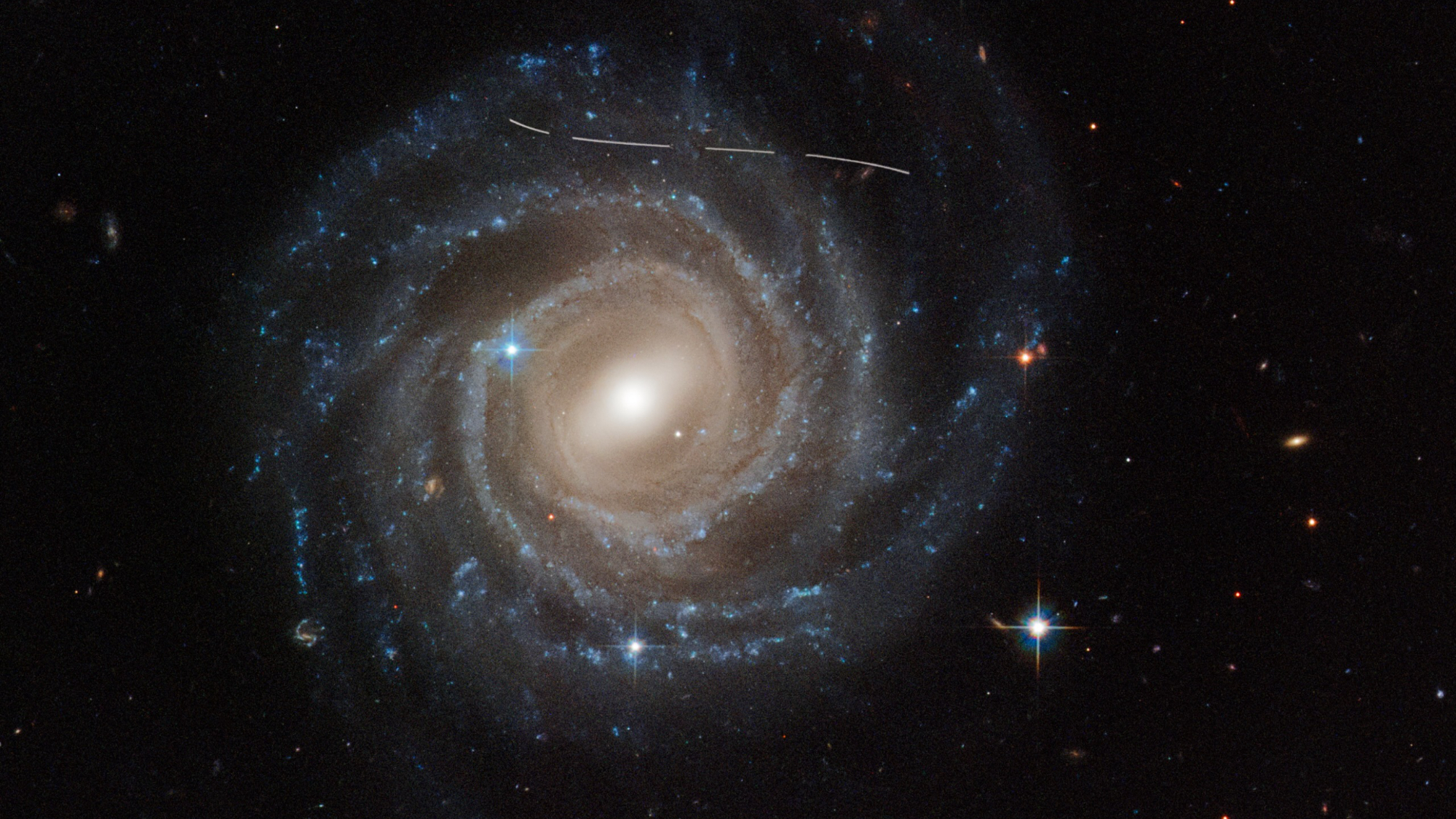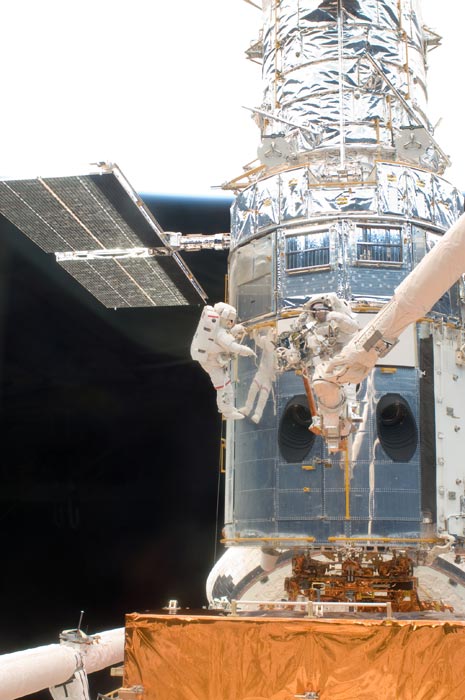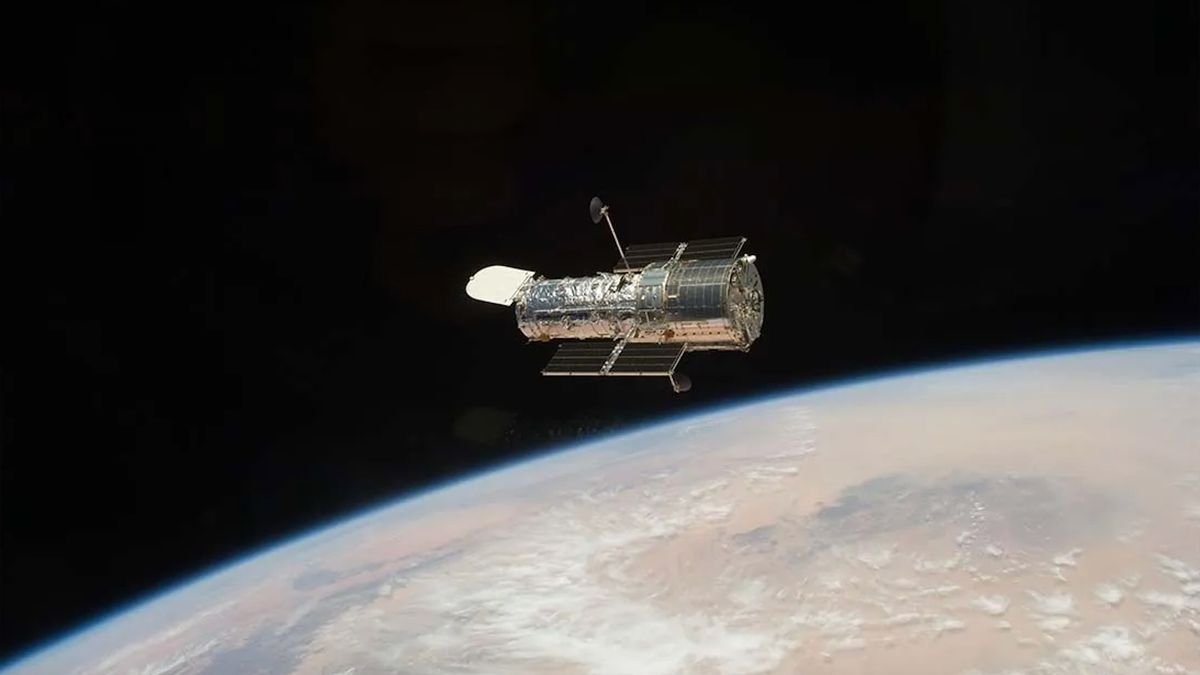We’ll get an update about NASA’s Hubble Space Telescope tomorrow (June 4), and it could be a pretty big deal.
On June 3, the agency announced that the Hubble Space Telescope team will be holding a press conference about the observatory’s status tomorrow at 4:00 p.m. EDT (2000 GMT). Specifically, officials said the point of this meeting will be to “provide an update on operations” for the telescope. Sounds routine, right? Well, not necessarily. The Hubble Telescope team doesn’t often hold press conferences like this — especially one with only two presenters, both of whom sport rather lofty titles.
Mark Clampin, director of the agency’s Astrophysics Division and Science Mission Directorate at NASA Headquarters, will be speaking, as will Patrick Crouse, Hubble’s project manager at NASA’s Goddard Space Flight Center in Maryland.
Related: A billionaire hopes to upgrade the Hubble Telescope on a private SpaceX mission, but could it really happen?
The news comes three days after Hubble went into automatic safe mode due to faulty readings coming from one of its final three working gyroscopes, which are devices that help scientists make sure the telescope is pointing in the correct direction. Since it launched in 1990, Hubble has gone through a bunch of gyroscopes, including some replacements. Now, it’s left with three.
Before you get too worried: Yes, that may seem like a terrible combination of facts in isolation. However, there’s some context within which to place them — context that offers hope Hubble isn’t done with its duties yet.
First of all, in its release about the upcoming conference, NASA said something that agency officials have reiterated time and again: “NASA anticipates Hubble will continue making discoveries, working with other observatories such as the agency’s James Webb Space Telescope, throughout this decade and into the next.”
This is a sentiment that’s been shared during prior gyroscope issues Hubble has faced as well, including earlier this year and late last year; the latter incident actually involved a short string of complications that were all remedied. Yet, neither required a conference to update the public about Hubble being back at it. Online announcements sufficed.
That brings us to the next point: Hubble doesn’t really need all three gyroscopes to work.

As NASA has stated, Hubble technically only requires one gyroscope to function properly — although, according to the European Space Agency (which partners with NASA on the mission), one-gyroscope mode may limit science observations to some degree.
Still, even if it turns out the telescope’s now-faulty gyroscope isn’t getting back on track, there are two that can allow the cosmic explorer to continue investigating the universe. In 2004, for instance, the observatory was placed into two-gyroscope mode after an envisioned Hubble servicing mission was canceled in the wake of the Columbia space shuttle tragedy. Eventually, Hubble Servicing Mission 4 replaced all six gyroscopes for the last time in 2009, and there ended up being a fifth servicing mission after that. But, again, Hubble now has only three of those gyroscopes left, one of which is the source of the latest issue. The other three all experienced what’s known as a “flex lead fail,” which has to do with wiring.
Per a NASA breakdown, in the event that only two gyroscopes in total are left working, it’s likely the team will keep one on and place the other into reserve. That way, if one of those two remaining gyroscopes goes down, the other that’d been resting will be nice, fresh and ready for Hubble’s last stretch.
Last stretch? Hopefully not, but it’s unfortunately true that scientists believe the telescope may be decommissioned in the mid- to late-2030s because our planet’s atmospheric drag force is slowly bringing the craft downward from its orbit approximately 320 miles (515 kilometers) above Earth.
Such decommissioning would involve either a controlled reentry of the telescope back into Earth’s atmosphere or a little boost of the scope into higher Earth orbit, where it could rest safely for a few decades. If Hubble reenters the atmosphere, it’d mostly burn up like other spacecraft do during that process — but, it’s too big to fully burn up. I imagine anything that could be salvaged would be preserved with the honor it deserves.
If you’re hung up on that brief mention of servicing the spacecraft in orbit, as astronauts famously did during its early years, it’s unclear whether that’s a possibility anymore.
Back in the late ’90s and early 2000s, brave NASA astronauts managed to ride up to Earth orbit and tinker with the observatory to install upgrades and apply refurbishments. The aforementioned servicing missions 4 and 5 were part of this effort. Think a microgravity body shop for a space telescope that also involves spacewalking.
The most well-known Hubble servicing mission is probably the first one, which occurred shortly after the telescope was launched to space because its seminal science data appeared corrupted when it got back to Earth. Hubble’s images were blurry, to put it simply, and scientists realized they’d accidentally given the spacecraft a flawed mirror. No trouble, the agency said, and sent astronauts to make the necessary adjustments. In space!

Recently, billionaire Jared Isaacman, who has been prominent in the commercial space sector thanks to the successful Inspiration4 all-civilian space launch he funded and his upcoming Polaris Dawn endeavor, tried reigniting the Hubble servicing concept. However, this concept hasn’t reached fruition yet, and it’s uncertain whether it ever will.
That said — and I’m aware of the hypocrisy behind what I’m about to say — speculation is the enemy of optimism.
Theoretically, anything is possible, we’ll know more about Hubble’s fate soon, and it’s probably best to delay our worries until there’s something to worry about. Also, in general, Hubble has continued to bang out space images as though nothing has changed. A new stellar portrait came out today, in fact, and Hubble had a hand in its construction. It’s a very cool view of an infant star that has a comet-like tail because other stars (hidden in the image) are pulling on its material.

Dr. Thomas Hughes is a UK-based scientist and science communicator who makes complex topics accessible to readers. His articles explore breakthroughs in various scientific disciplines, from space exploration to cutting-edge research.








